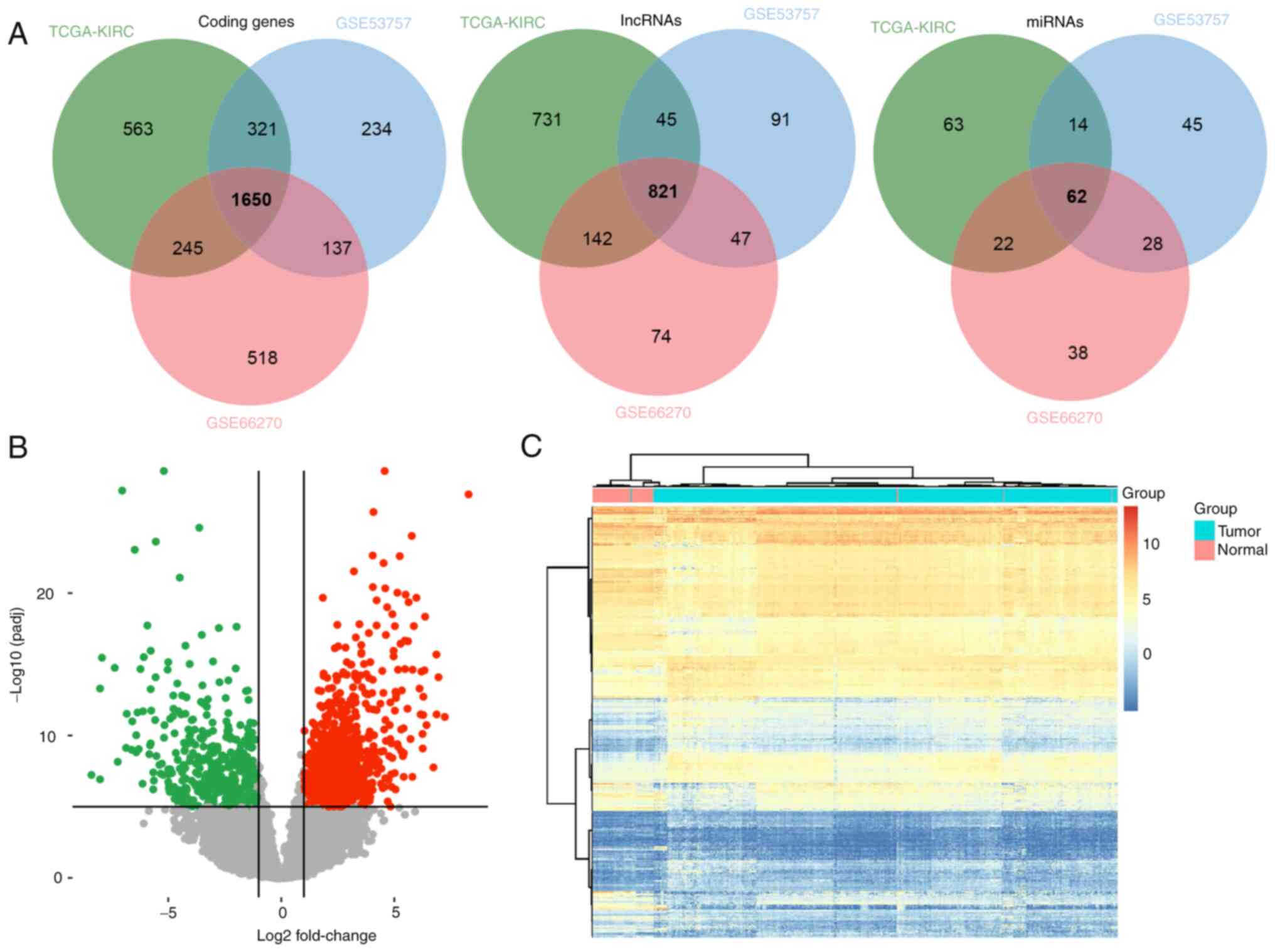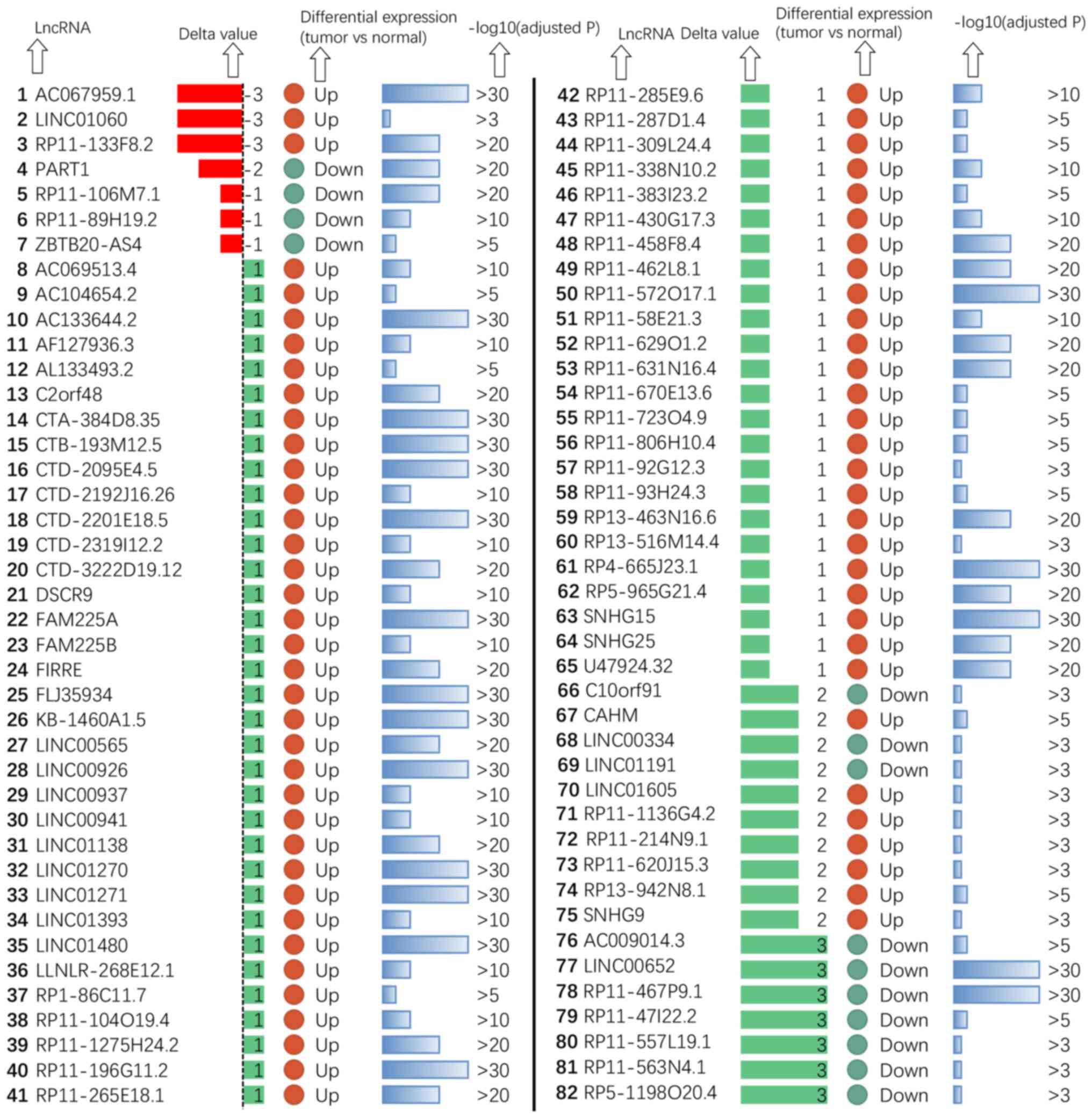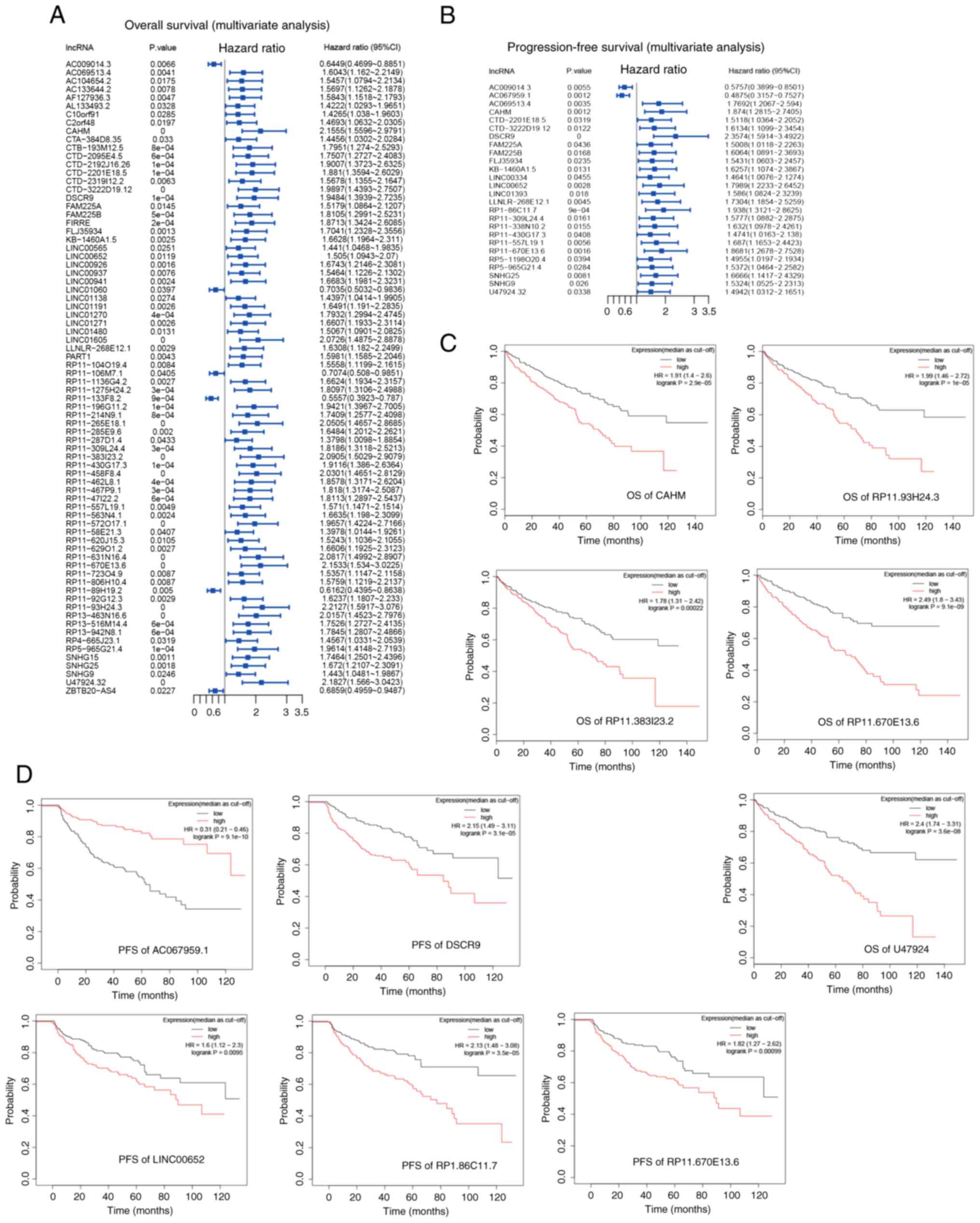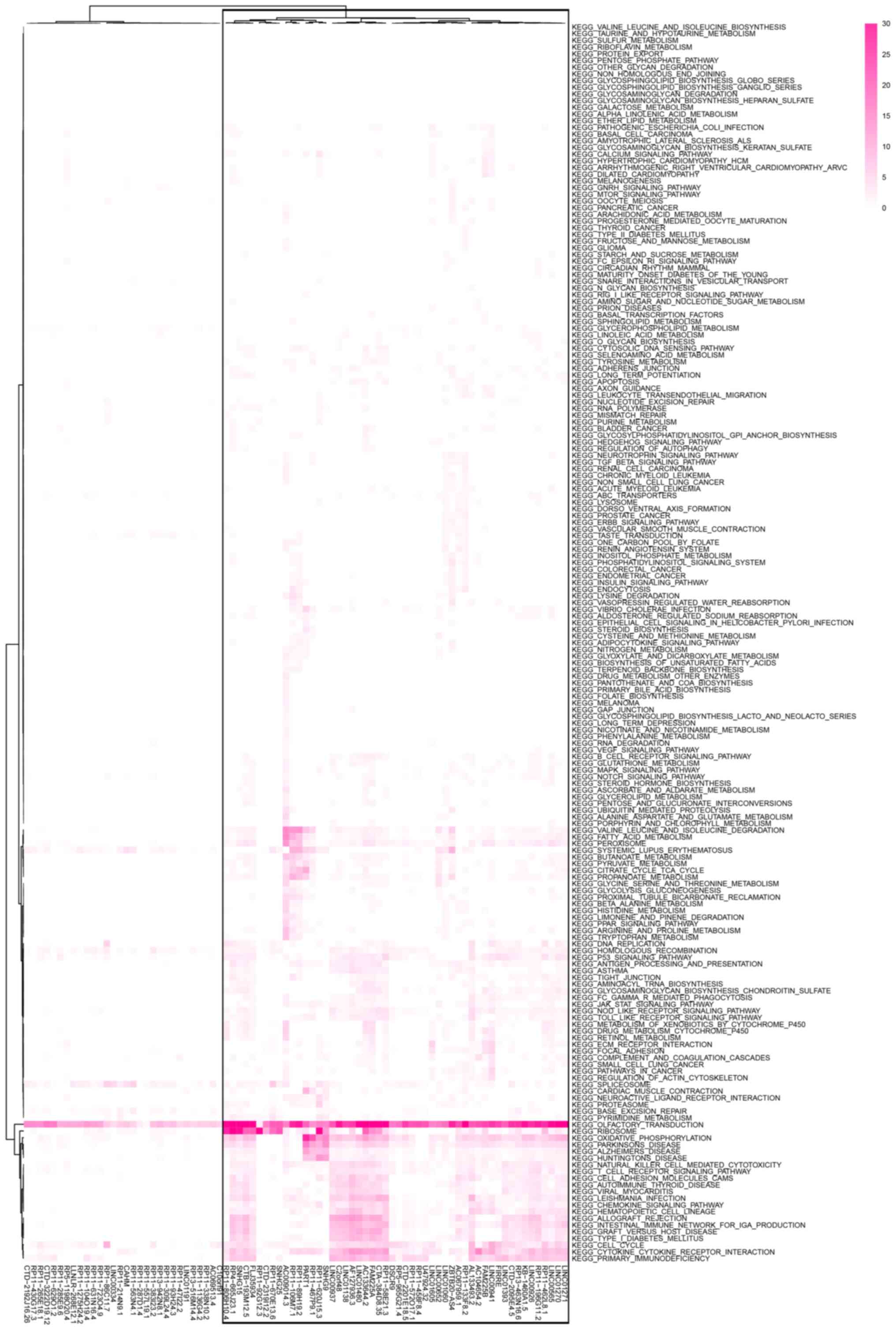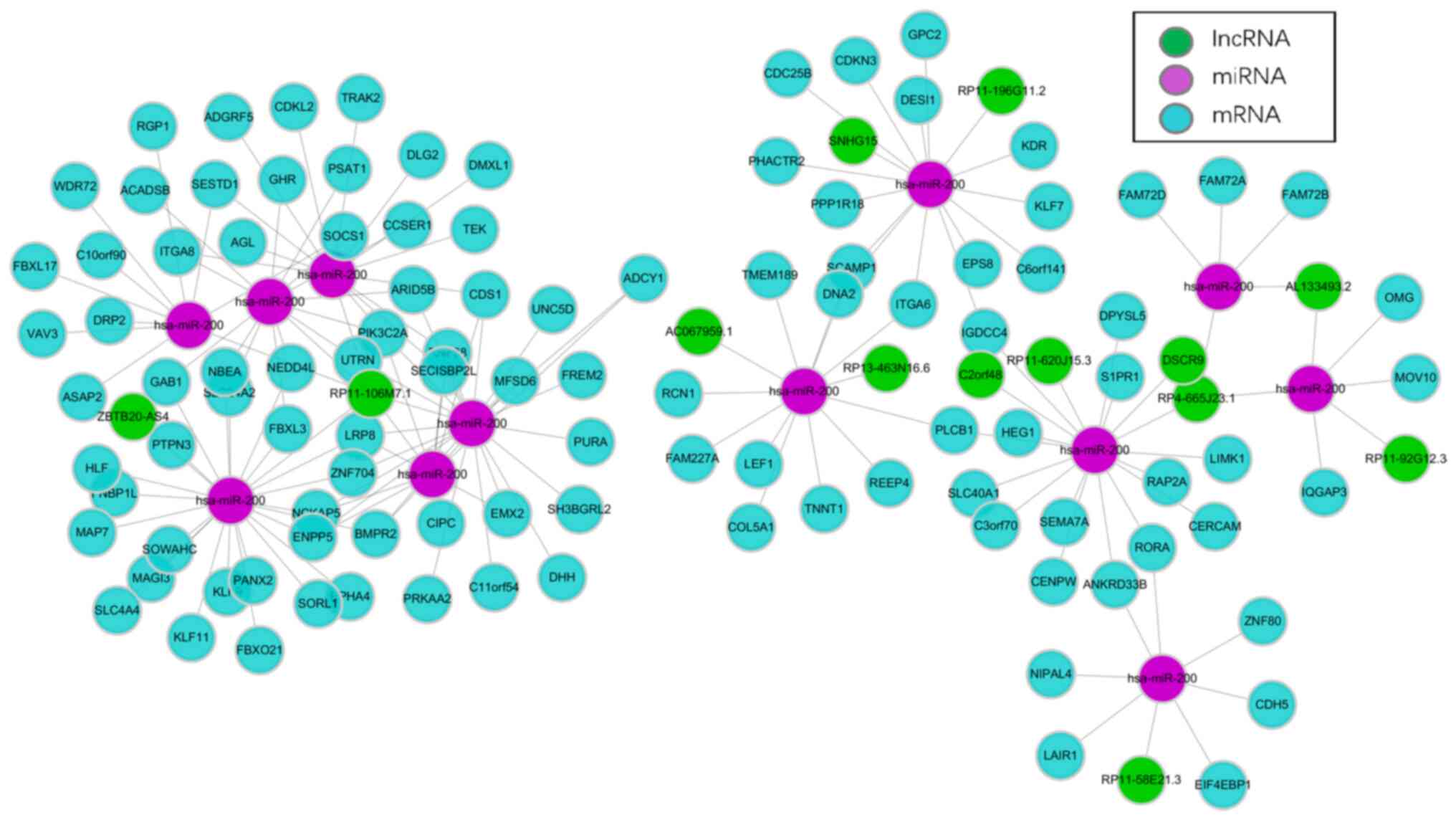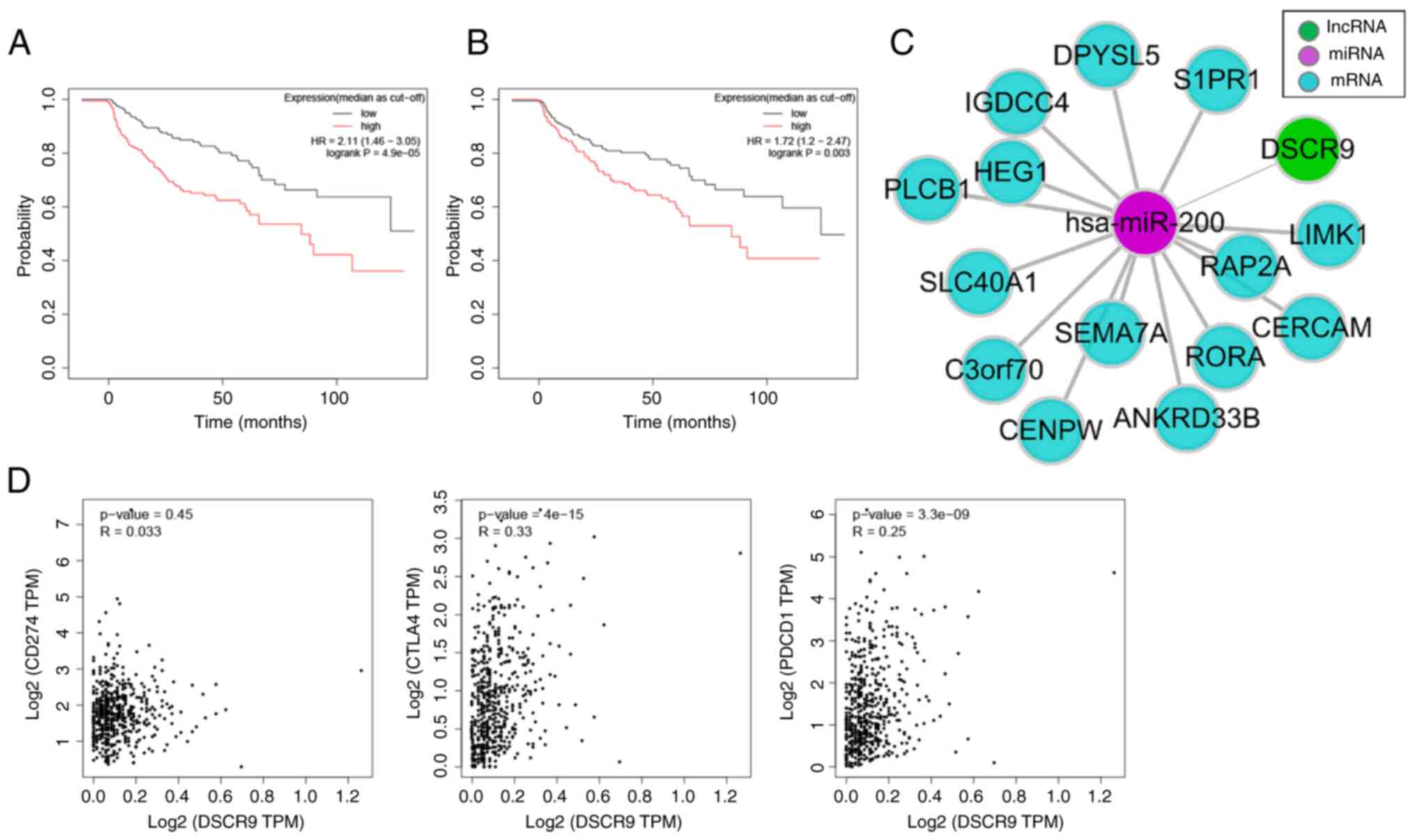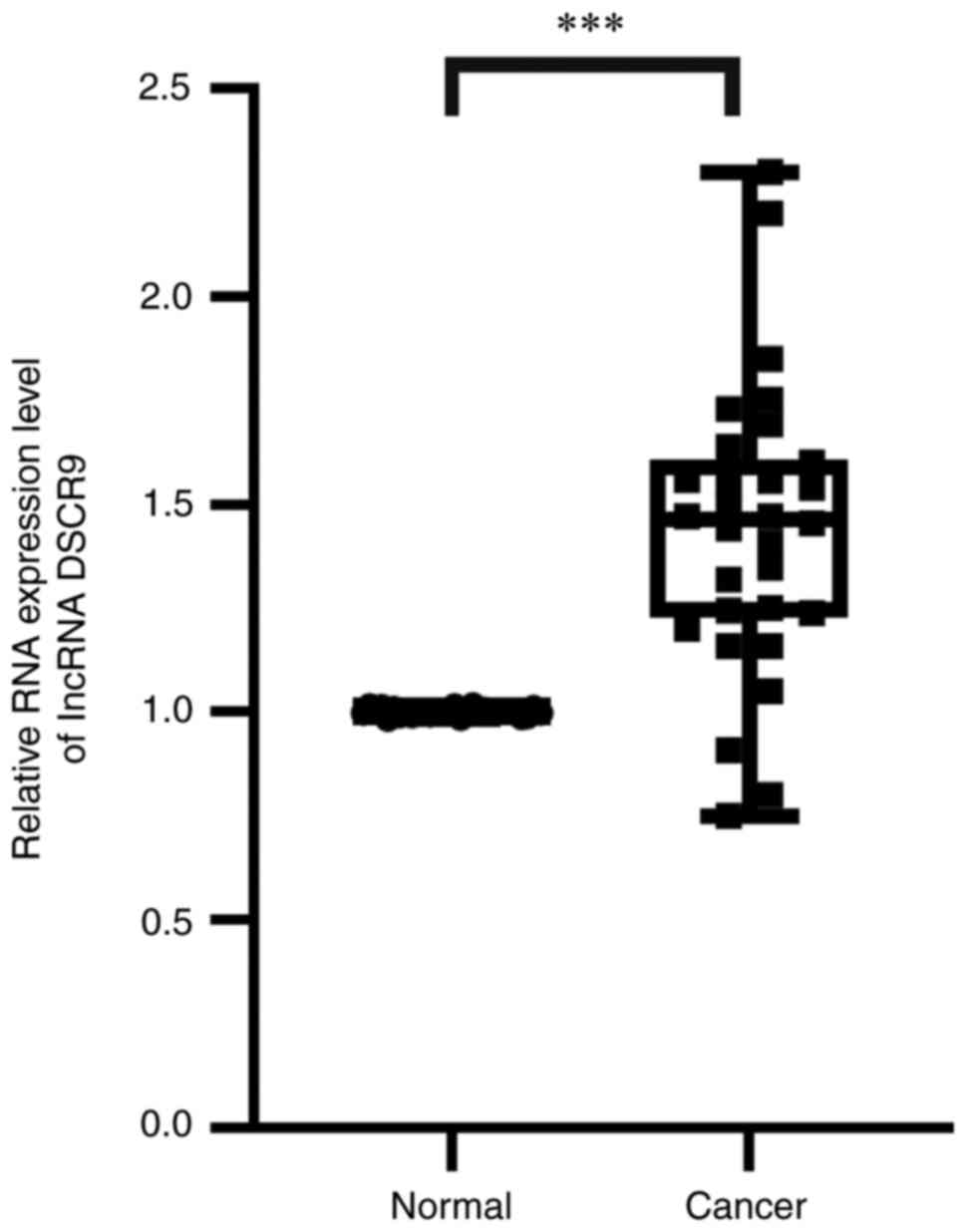|
1
|
Siegel RL, Miller KD and Jemal A: Cancer
statistics, 2020. CA Cancer J Clin. 70:7–30. 2020. View Article : Google Scholar : PubMed/NCBI
|
|
2
|
Jonasch E, Walker CL and Rathmell WK:
Clear cell renal cell carcinoma ontogeny and mechanisms of
lethality. Nat Rev Nephrol. 17:245–261. 2021. View Article : Google Scholar : PubMed/NCBI
|
|
3
|
Terry S, Dalban C, Rioux-Leclercq N, Adam
J, Meylan M, Buart S, Bougoüin A, Lespagnol A, Dugay F, Moreno IC,
et al: Association of AXL and PD-L1 expression with clinical
outcomes in patients with advanced renal cell carcinoma treated
with PD-1 blockade. Clin Cancer Res. 27:6749–6760. 2021. View Article : Google Scholar : PubMed/NCBI
|
|
4
|
Wang Z, Yang B, Zhang M, Guo W, Wu Z, Wang
Y, Jia L, Li S; Cancer Genome Atlas Research Network, ; Xie W and
Yang D: lncRNA epigenetic landscape analysis identifies EPIC1 as an
oncogenic lncRNA that interacts with MYC and promotes cell-cycle
progression in cancer. Cancer Cell. 33:706–720.e9. 2018. View Article : Google Scholar : PubMed/NCBI
|
|
5
|
Yang X, Xie Z, Lei X and Gan R: Long
non-coding RNA GAS5 in human cancer. Oncol Lett. 20:2587–2594.
2020. View Article : Google Scholar : PubMed/NCBI
|
|
6
|
Yang Z, Li X, Yang Y, He Z, Qu X and Zhang
Y: Long noncoding RNAs in the progression, metastasis, and
prognosis of osteosarcoma. Cell Death Dis. 7:e23892016. View Article : Google Scholar : PubMed/NCBI
|
|
7
|
Ma H, Chang H, Yang W, Lu Y, Hu J and Jin
S: A novel IFNα-induced long noncoding RNA negatively regulates
immunosuppression by interrupting H3K27 acetylation in head and
neck squamous cell carcinoma. Mol Cancer. 19:42020. View Article : Google Scholar : PubMed/NCBI
|
|
8
|
Wang S, You H and Yu S: Long non-coding
RNA HOXA-AS2 promotes the expression levels of hypoxia-inducible
factor-1α and programmed death-ligand 1, and regulates
nasopharyngeal carcinoma progression via miR-519. Oncol Lett.
20:2452020. View Article : Google Scholar : PubMed/NCBI
|
|
9
|
Braga EA, Fridman MV, Moscovtsev AA,
Filippova EA, Dmitriev AA and Kushlinskii NE: LncRNAs in ovarian
cancer progression, metastasis, and main pathways: ceRNA and
alternative mechanisms. Int J Mol Sci. 21:88552020. View Article : Google Scholar : PubMed/NCBI
|
|
10
|
Zhao K, Zhang Q, Wang Y, Zhang J, Cong R,
Song N and Wang Z: The construction and analysis of competitive
endogenous RNA (ceRNA) networks in metastatic renal cell carcinoma:
A study based on the cancer genome atlas. Transl Androl Urol.
9:303–311. 2020. View Article : Google Scholar : PubMed/NCBI
|
|
11
|
von Roemeling CA, Radisky DC, Marlow LA,
Cooper SJ, Grebe SK, Anastasiadis PZ, Tun HW and Copland JA:
Neuronal pentraxin 2 supports clear cell renal cell carcinoma by
activating the AMPA-selective glutamate receptor-4. Cancer Res.
74:4796–4810. 2014. View Article : Google Scholar : PubMed/NCBI
|
|
12
|
Wotschofsky Z, Gummlich L, Liep J, Stephan
C, Kilic E, Jung K, Billaud JN and Meyer HA: Integrated microRNA
and mRNA signature associated with the transition from the locally
confined to the metastasized clear cell renal cell carcinoma
exemplified by miR-146-5p. PLoS One. 11:e01487462016. View Article : Google Scholar : PubMed/NCBI
|
|
13
|
Robinson MD, McCarthy DJ and Smyth GK:
edgeR: A bioconductor package for differential expression analysis
of digital gene expression data. Bioinformatics. 26:139–140. 2010.
View Article : Google Scholar : PubMed/NCBI
|
|
14
|
Wu Z, Irizarry RA, Gentleman R,
Martinez-Murillo F and Spencer F: A model-based background
adjustment for oligonucleotide expression arrays. J Am Stat Assoc.
99:909–917. 2004. View Article : Google Scholar
|
|
15
|
Zhang H, Chen X, Zhang D, Liu L, Song J,
Xu Y and Tian J: Identification of a novel six-long noncoding RNA
signature for molecular diagnosis of dilated cardiomyopathy. DNA
Cell Biol. Nov 3–2020.(Epub ahead of print). View Article : Google Scholar
|
|
16
|
Jeggari A, Marks DS and Larsson E:
miRcode: A map of putative microRNA target sites in the long
non-coding transcriptome. Bioinformatics. 28:2062–2063. 2012.
View Article : Google Scholar : PubMed/NCBI
|
|
17
|
Wong N and Wang X: miRDB: An online
resource for microRNA target prediction and functional annotations.
Nucleic Acids Res. 43:(Database Issue). D146–D152. 2015. View Article : Google Scholar : PubMed/NCBI
|
|
18
|
Song J, Song F, Liu K, Zhang W, Luo R,
Tang Y and Ran L: Multi-omics analysis reveals
epithelial-mesenchymal transition-related gene FOXM1 as a novel
prognostic biomarker in clear cell renal carcinoma. Aging (Albany
NY). 11:10316–10337. 2019. View Article : Google Scholar : PubMed/NCBI
|
|
19
|
Kanehisa M: The KEGG database. Novartis
Found Symp. 247:91–103. 119–128. 244–252. 2002. View Article : Google Scholar : PubMed/NCBI
|
|
20
|
Livak KJ and Schmittgen TD: Analysis of
relative gene expression data using real-time quantitative PCR and
the 2(−Delta Delta C(T)) method. Methods. 25:402–408. 2001.
View Article : Google Scholar : PubMed/NCBI
|
|
21
|
Jiang Y, Han D, Zhao Y, Zhang C, Shi X and
Gu W: Multi-omics analysis of the prognosis and biological function
for TRPV channel family in clear cell renal cell carcinoma. Front
Immunol. 13:8721702022. View Article : Google Scholar : PubMed/NCBI
|
|
22
|
Hakimi AA, Ostrovnaya I, Reva B, Schultz
N, Chen YB, Gonen M, Liu H, Takeda S, Voss MH, Tickoo SK, et al:
Adverse outcomes in clear cell renal cell carcinoma with mutations
of 3p21 epigenetic regulators BAP1 and SETD2: A report by MSKCC and
the KIRC TCGA research network. Clin Cancer Res. 19:3259–3267.
2013. View Article : Google Scholar : PubMed/NCBI
|
|
23
|
Ho TH, Park IY, Zhao H, Tong P, Champion
MD, Yan H, Monzon FA, Hoang A, Tamboli P, Parker AS, et al:
High-resolution profiling of histone h3 lysine 36 trimethylation in
metastatic renal cell carcinoma. Oncogene. 35:1565–1574. 2016.
View Article : Google Scholar : PubMed/NCBI
|
|
24
|
Yang W, Zhang K, Li L, Ma K, Hong B, Gong
Y and Gong K: Discovery and validation of the prognostic value of
the lncRNAs encoding snoRNAs in patients with clear cell renal cell
carcinoma. Aging (Albany NY). 12:4424–4444. 2020. View Article : Google Scholar : PubMed/NCBI
|
|
25
|
Wang Y, Yi K, Liu X, Tan Y, Jin W, Li Y,
Zhou J, Wang H and Kang C: HOTAIR up-regulation activates NF-κB to
induce immunoescape in gliomas. Front Immunol. 12:7854632021.
View Article : Google Scholar : PubMed/NCBI
|
|
26
|
Niu C, Li M, Chen Y, Zhang X, Zhu S, Zhou
X, Zhou L, Li Z, Xu J, Hu JF, et al: LncRNA NCAL1 potentiates
natural killer cell cytotoxicity through the Gab2-PI3K-AKT pathway.
Front Immunol. 13:9701952022. View Article : Google Scholar : PubMed/NCBI
|
|
27
|
Gao C, Peng FH and Peng LK: MiR-200c
sensitizes clear-cell renal cell carcinoma cells to sorafenib and
imatinib by targeting heme oxygenase-1. Neoplasma. 61:680–689.
2014. View Article : Google Scholar : PubMed/NCBI
|
|
28
|
Takamatsu K, Maekawa K, Togashi T, Choi
DK, Suzuki Y, Taylor TD, Toyoda A, Sugano S, Fujiyama A, Hattori M,
et al: Identification of two novel primate-specific genes in DSCR.
DNA Res. 9:89–97. 2002. View Article : Google Scholar : PubMed/NCBI
|
|
29
|
Rodriguez-Sanchez IP, Garza-Rodríguez ML,
Tejero ME, Cole SA, Comuzzie AG and Barrera-Saldaña HA: DSCR9 gene
simultaneous expression in placental, testicular and renal tissues
from baboon (Papio hamadryas). BMC Res Notes. 5:2982012. View Article : Google Scholar : PubMed/NCBI
|
|
30
|
Yegnasubramanian S, Wu Z, Haffner MC,
Esopi D, Aryee MJ, Badrinath R, He TL, Morgan JD, Carvalho B, Zheng
Q, et al: Chromosome-wide mapping of DNA methylation patterns in
normal and malignant prostate cells reveals pervasive methylation
of gene-associated and conserved intergenic sequences. BMC
Genomics. 12:3132011. View Article : Google Scholar : PubMed/NCBI
|
|
31
|
Liu Z, Mi M, Li X, Zheng X, Wu G and Zhang
L: lncRNA OSTN-AS1 may represent a novel immune-related prognostic
marker for triple-negative breast cancer based on integrated
analysis of a ceRNA network. Front Genet. 10:8502019. View Article : Google Scholar : PubMed/NCBI
|
|
32
|
Liu F, Wollstein A, Hysi PG, Ankra-Badu
GA, Spector TD, Park D, Zhu G, Larsson M, Duffy DL, Montgomery GW,
et al: Digital quantification of human eye color highlights genetic
association of three new loci. PLoS Genet. 6:e10009342010.
View Article : Google Scholar : PubMed/NCBI
|
|
33
|
Chen M, Wang J, Luo Y, Huang K, Shi X, Liu
Y, Li J, Lai Z, Xue S, Gao H, et al: Identify down syndrome
transcriptome associations using integrative analysis of microarray
database and correlation-interaction network. Hum Genomics.
12:22018. View Article : Google Scholar : PubMed/NCBI
|
|
34
|
Wen J, Liu J, Jiang H, Wan L, Xin L, Sun
Y, Zhang P, Sun Y, Zhang Y, Du X, et al: lncRNA expression profiles
related to apoptosis and autophagy in peripheral blood mononuclear
cells of patients with rheumatoid arthritis. FEBS Open Bio.
10:1642–1654. 2020. View Article : Google Scholar : PubMed/NCBI
|
|
35
|
Zhuang H, Huang S, Zhou Z, Ma Z, Zhang Z,
Zhang C and Hou B: A four prognosis-associated lncRNAs (PALnc)
based risk score system reflects immune cell infiltration and
predicts patient survival in pancreatic cancer. Cancer Cell Int.
20:4932020. View Article : Google Scholar : PubMed/NCBI
|















